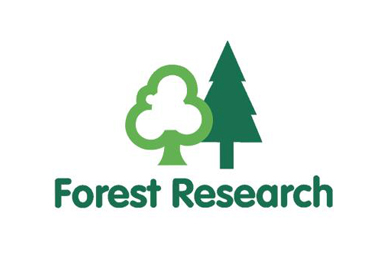Forest Research has launched a new citizen science app combining England and Scotland windblow data to increase the knowledge of the full impact of Storm Arwen.
The app is easy to use and allows anyone to validate and improve the information available.
Confor members are urged to sign up and give the feedback requested, which can include verification of windblow identified using satellite imagery. The app also offers the option to state if it is the correct area, whether new or old, what extra felling area will be required up to the windfirm edge and what species are involved.
Richard Hunter, Confor’s Technical and Industry Support Manager, said: “This is an opportunity to identify some windblown areas that might have been missed, and to enhance what we know already. This will be very important as we try to manage the situation and maintain as stable a market for timber crops as possible.”
The app will remain open until 23 January and the information collected will be turned into a report to support the industry.
The app launched on Friday 17th December at 4pm and by Monday 20th December at 9am, already had more than 100 hectares validated, much of that removing false positives produced by satellite imagery. New information is fed back into the algorithm that reads the satellite data and turns it into a shape file. The system learns and therefore the next imagery reading is more accurate – so the more area validated, the more accurate it becomes.
Mr Hunter thanked Confor members who provided valuable information through a windblow questionnaire sent out recently, adding: “This has now been superseded by the new app – produced by Forest Research, with the support of Scottish Forestry, Forestry Commission and Confor. We encourage members to engage fully with this app.”
Mr Hunter also reminded members to work with clients to understand that tackling windblow is potentially dangerous work – and should be mechanised wherever possible, by competent and experienced contractors.
This is the latest collaborative effort between Confor and the public forest bodies in response to Storm Arwen, which caused intensive damage to Scotland’s woodlands – especially down the east coast, across the Borders and East Lothian, stretching into Galloway. Another swathe of damage runs through Aberdeenshire, Angus and into Perthshire. There was also significant damage in northern England.
Scottish Government Environment Minister Màiri McAllan said: “Storm Arwen provided a salutary lesson of the power of nature and the challenge of climate change. Our people suffered and so, too, did our natural environment.
“The impact is evident in the distressing images of flattened forests and woodlands which will take decades, if not centuries to recover from. Their loss reminds us of the significant role trees play in our lives, communities, economy and wellbeing.
“Behind this is a monumental clear-up operation which is being undertaken by large and small woodland owners. Whilst this is being carried out, the message to the public is not to enter into affected forests until they are made safe.
“Forestry might be a long term business, but getting to grips with managing the windblown timber has already begun. As more accurate information becomes available, Scotland’s forest industry will be taking decisions on handling the extra volumes of timber that needs to be harvested.
”Through Scottish Forestry, advice, information and assistance is being made available to woodland owners and the forestry sector to help manage the aftermath of Storm Arwen.”
Andy Leitch, Deputy Chief Executive of Confor, said: “With new information emerging every day about the impact of Storm Arwen – from satellite data, localised aerial surveys and on-ground observation – it is vital that the industry and the public forestry bodies work together as closely as possible.
“The most effective way to ensure windblown trees are removed safely and quickly is to share information, identify opportunities for joint approaches – and deploy resources where they are most needed.
“The clean-up after the storm – and the work needed to remove the windblown timber, make safe the remaining trees and get the timber to wood processors – will take time and effort. However, Confor is fully committed to working in partnership with the public forestry bodies to make that happen in a speedy and efficient manner.”
Scottish Forestry, Confor and FLS will continue to work closely at both national and levels, taking into account the different timber markets.
Scottish Forestry has already deployed its staffing resource to the areas most affected, anticipating that woodland owners in the areas affected will require advice.
Action to fast track and simplify the paperwork around Felling Permissions and Forest Management Plans has been undertaken to help woodland managers tackle trees that were affected by windblow.
FLS began discussions with its timber customers straight after Storm Arwen hit to determine market availability, volume requirements and species demand. The agency, which manages the national forests, is also compiling more detailed information on areas, volumes, species and damage types in order to prioritise areas for harvesting and sale.
Most of the trees that have been flattened will be removed over the next year and sent to wood processors across Scotland. In time, the forests will be replanted.







